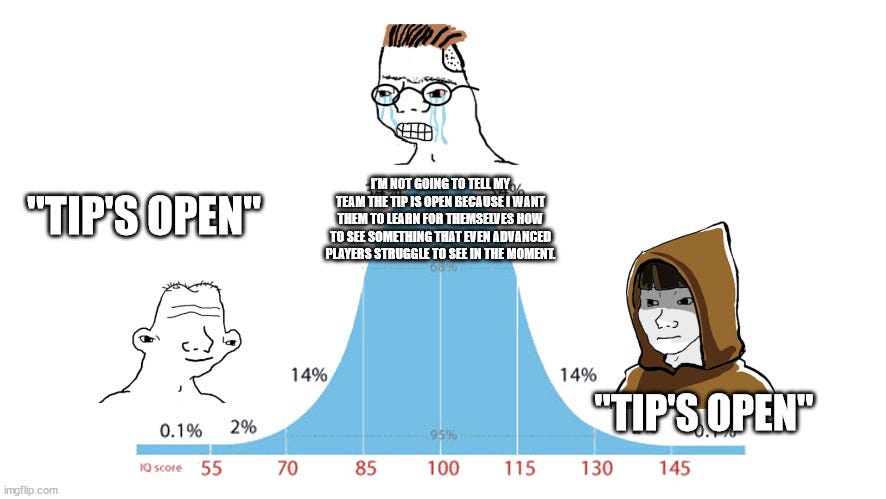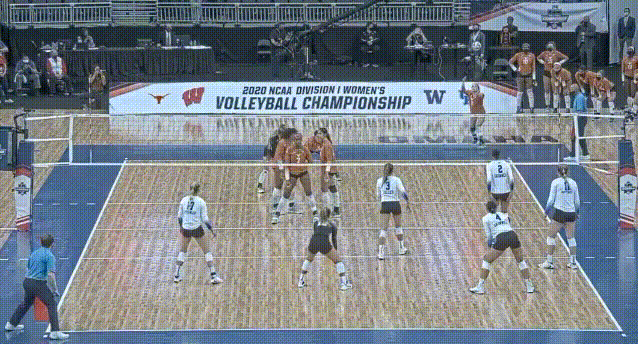If you haven’t seen the other 2 articles in this Tuesday Toolbox series, check them out here:
Coaching Eyework Pt1
Coaching Eyework Pt2
We’re talking Coaching Eyework in the sense of how we learn to see the game. What do we look at? How does that inform how we give feedback and what we say? As a reader put it:
I am wondering how to watch a match as an aspiring head coach? Assuming 1 assistant or maybe none at all. I’m just a couple years into this, have only been an assistant, but want to be a head coach at the high school varsity level and possibly the high school club level. I can talk to the team about mindset/motivational stuff, but feel like the game moves a bit fast for me right now so it’s tough to know what to watch for, and I feel like I lose credibility if I’m only talking about mindset.
I don’t want to say results-based things like “pass better” - I don’t think that’s usually helpful - but I want to be able to bring up SIMPLE tactical/technical changes that could help going forward in the match. What should I watch for? Should I watch our side of the net more, or the other side? (I also want to be able to watch a Nebraska match, for example, and be able to do some simple analysis to work on my coaching eye. I’ve started watching opposing middles to see if they’re often shadowing/committing to our middle, for example.)
Long way of saying: I want to be able to watch a match in real time and have something useful to say about the actual volleyball, in a way that can help the team, without giving them too much to think about.
Some of what this question touches on could start to be considered as part of your match gameplan:
Should I watch blockers or defenders?
Should I watch our offense or the opponent defense?
Is it more important to give feedback or to scout and anticipate the next play?
I want to stray away from that a touch and get more to the core of the issue, which I believe is encapsulated in this sentence:
I can talk to the team about mindset/motivational stuff, but feel like the game moves a bit fast for me right now so it’s tough to know what to watch for, and I feel like I lose credibility if I’m only talking about mindset.
First of all, coach-who-asked-this-question, this level of self-awareness means that you’re going to be just fine and you’ll figure it out.
Now, how do we get the game to slow down? Here’s where the previous 2 parts of this article series come into plan:
Develop your eye by watching and giving feedback about one specific thing.
Develop your eye even more by watching more complex or difficult-to-understand plays multiple times until you get a sense of what happened just by watching in real-time.
If you do this, you’ll find that the game doesn’t move so fast for you, so long as you keep your eyework in the game the same. And that’s the challenge. Many coaches can get good in practice at keeping their eye targeted and their feedback specific. But once they get in the game, they start trying to see everything and they see nothing.
The key here is that, even in the game, you need to keep your vision targeted and your scope limited. If you do that, you can continue to give effective feedback throughout the match.
What you choose to target will depend on your role and level. For example, on an NCAA or professional team, the roles might be:
A setting coach who keeps an eye on the setters, as well as what tactics the opposing blockers are using.
A defensive coach who is charting opponent setting and attack tendencies and relaying that information to the defenders.
A coach who is keeping track of who their serving tendencies in each of our rotations.
The head coach could perform one of these roles and often does. It’s also possible that the head coach (especially at a pro level) is doing none of these roles, because they are delegating them to trusted assistants. In that case, the head coach will then focus on yelling at the refs the overall strategic picture.
But let’s say that (a) you ARE the head coach of a high school-aged team and (b) you have either 0 or 1 assistants. So you have one job to do. What’s it going to be?
In this, case, as I touch on in this article, your job is to be Win-The-Next-Point Guy:
Club Vball Special: In-Match Coaching
I’ve been talking a lot about teaching so far in February. When we think about teaching the game, we think about practice. That’s natural, as coaches we do most of our teaching at practice. That’s the primary platform for teaching the game. But I want to talk a little bit about In-Match Coaching today, and especially as it relates to the club world. Like many of you, I’ll be coaching this President’s Day Weekend! This is part of my annual tradition of starting the club season NOT coaching a team and getting roped into filling in for somebody somewhere along the way.
Now, exactly how you win-the-next-point is going to depend on your level, your team, and what you’ve been working on in practice. But here’s a four likely candidates and what your eyework will be during the match:
Make Them Play and Make Them Really Play
We know that MTP is important. If your team can MTP at a reasonable level, you’re going to be successful. And especially if you can go from MTP → MTRP by turning some bad passes into semi-hittable sets and into decent Pot Throws or Chops To 1.
So what do you need to look at in order to be the MTP coach? Let’s start by thinking about how you lose the ability to MTP:
Get aced
Setting error
Attack error
Since an overwhelming amount of serves land on one side or the other of your zone 6 player (because most serves go to zone 6, especially in juniors), keeping your gaze in the center of your reception line will help you see this. And rather than following the serve there, have your eyes there before the ball is served. This will help you see the communication and initial move to the ball. If you follow the ball to the contact, you’ll only be able to coach the contact. But Riley Salmon once told me that hesitation is the biggest cause of aces and, if so, this changes what we need to look at in order to save aces.
Assuming the ball is passed up, in some way, I like to softly follow the ball, while keeping my gaze mostly in that center of the court. What I mean by this is that I won’t follow the full arc of the ball intensely. I’ll make sure the ball is in my vision, but I want to keep the center of my gaze close to the center of the court, because that will allow me to see (a) the setter move toward the ball and/or (b) a non-setter step in to play the ball.
A significant amount of non-MTPs occur when a setter takes a ball she shouldn’t and/or a non-setter fails to step in and take a ball she should. Teach your juniors players to take the ball from the setter if they have an easier play at it. The setter doesn’t need to call help! You might even win a National Championship if you start doing it right.
And then as the ball is set, you can see the attacker. You won’t be able to see the approach and some of the technical feedback you would need to give, but what I’m probably looking for here is just the decision. Was that a ball to try to kill, or just keep in play? Was that a ball to Chop To 1 or Pot Throw? Etc.
If there’s one coach role I’d recommend you spend your eyework on for a high school team, it’s Make Them Play Coach, but here’s 3 more to consider:
Keep reading with a 7-day free trial
Subscribe to Smarter Volley by Joe Trinsey to keep reading this post and get 7 days of free access to the full post archives.




